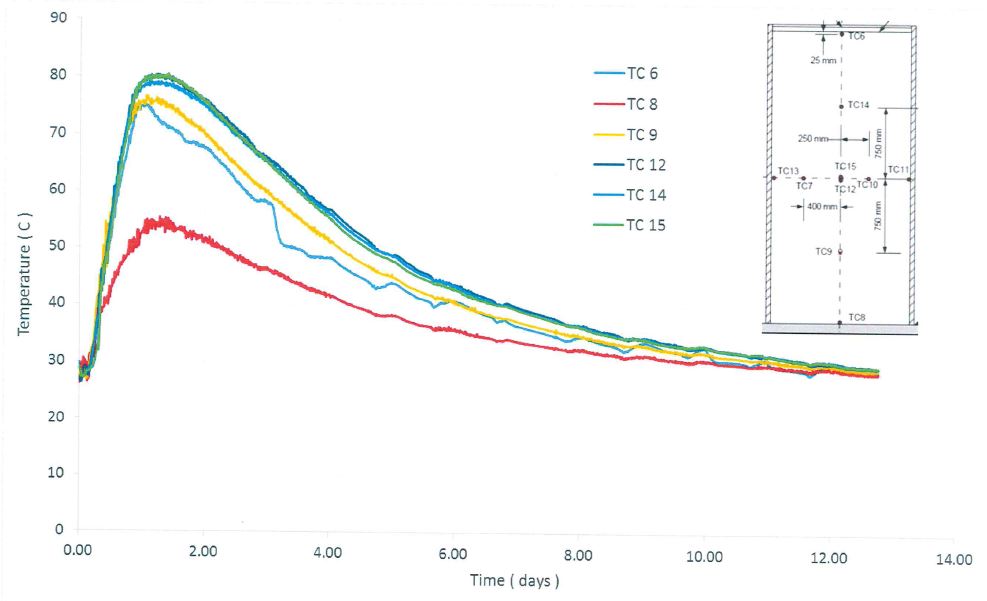Temperature control of concrete structures is a crucial part of the construction process. To guarantee the quality of a structure, it is important to ensure that the concrete temperature is maintained within the ideal range.
In this article, we discuss target concrete temperature, its importance, and methods to achieve target temperature ranges. Additionally, guidance and best practices are shared to help civil engineers achieve optimal temperature control for concrete structures.
The ideal temperature range for Concrete concrete is between 27-35 Degrees Celsius. This area allows for an adequate hydration process, which is essential for the strength and durability of the concrete. If the concrete mix is too cold, hydration will be delayed and the quality of the concrete may be worse. If the concrete mix is too hot, hydration occurs too quickly and can cause the concrete to crack or develop other defects.
There are many factors that can affect the temperature during mixing. Air temperature, ingredient temperature and weather are important factors. To maintain the ideal range, it is important to consider these factors and adjust the mixing process if necessary.
What causes a temperature rise in concrete?
Concrete temperature is an indication of the heat generated during the cement hydration process. The reaction produces heat.
The main component that contributes to the allure of concrete is C 3 A. Other Ingredients in cement like C 3 SC 4 AF and C 2 S Effects in descending order Heat of hydration .
This can also be expressed differently.
An increase in cement content and a decrease in water-cement ratio would also increase the temperature rise. In addition, high ambient temperatures, high temperatures in aggregates, water, etc. also lead to an increase in temperature.


Why we need to limit temperature rise and temperature rise in cold climates
Increasing the temperature of concrete has many consequences. Some of the most important aspects are as follows.
- One of the main causes of the increase in temperature is the delayed formation of ettringite. This occurs as the temperature of the concrete increases. In general, the temperature increase during the hydration process is limited to 70°C. 0 C. Ettringite expands over time and as a result the internal volume of the concrete increases, causing cracks in the concrete. This would affect the structural capacity and durability of the concrete . That's why we have Concreting temperature .
- An increase in temperature would increase surface evaporation and lead to rapid shrinkage. This would lead to cracks in the concrete surface.
- A significant increase in core temperature will not allow us to overcome the temperature gradient (20 0 C) and temperature difference (25 0 C) between core and surface within the acceptable range. This would cause the concrete to crack.
- The appropriate temperature is very important to complete the hydration process. Low temperatures in cold climates can cause an incomplete hydration reaction, resulting in low compressive strength of concrete. This can be done by concrete hardening methods which can increase the temperature.
How to control temperature rise in concrete
As explained above, it is very important to maintain the temperature as stated in the project specifications or relevant code of practice. Below are some of the methods that can be used during construction to keep the maximum temperature within limits.
- Use of cement with low heat resistance
- Reduce the temperature of the aggregates. Water cooling is possible.
- Using ice water to mix concrete
- Reduce the cement content, but this is not always possible when we have high Compressive strength of concrete .
- Use cement substitute like fly ash to control cement content. We can replace the cement content by about 25-35%.
- Use healing methods such as internal cooling. Pipes for water circulation can be placed in concrete. After concreting, water circulates while the temperature of the concrete is monitored.
- Avoid the time of day when pouring concrete.

